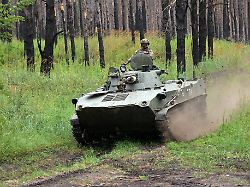During the Ukraine summit in Saudi Arabia, Kremlin spokesman Peskov surprisingly announced that he “does not want to conquer any new Ukrainian territories”. Instead, the Kremlin wants complete control of the annexed areas. A look at the map shows that Moscow has big plans.
The Kremlin’s original plan to take Ukraine in a few days was shelved after 17 months of “special operations”. The invasion of Kiev, as intended by President Vladimir Putin in February 2022, never took place. “Mission failed,” one might say, if Russia did not continue bombing and drone strikes in Ukraine, killing children and civilians, and occupying large swaths of eastern Ukraine.
The latest statement by Kremlin spokesman Dmitry Peskov therefore comes as a surprise: While practically all major and regional powers apart from Russia were sitting together in Saudi Arabia for the Ukraine meeting, Peskov declared that Moscow does not want to conquer any further areas of Ukraine in the future. This is the first time that Russia has publicly said goodbye to the original plan to bring Ukraine fully under Russian control. But that doesn’t mean that Russia is content with the areas it controls: “Russia wants to control the areas that are stipulated in the constitution.”
These are the Ukrainian peninsula of Crimea, annexed in 2014, and since 2022 the oblasts of Luhansk, Donetsk, Zaporizhia and Cherson. The mainland areas are militarily but only partially in Russian hands. “But Moscow wants to bring the areas under 100 percent Russian control,” says Austrian Colonel Markus Reisner. “That means the fighting will of course continue.”
30,154 square kilometers
A look at the map shows that the Russians still lack some land for the new conquest objective. In southern eastern Ukraine, Moscow currently controls 64 percent of the Kherson region. This roughly corresponds to an area of 18,000 square kilometers. Around 36 percent, i.e. a little more than 10,000 square kilometers, are in Ukrainian hands. Russia currently occupies 72 percent of Zaporizhia Oblast, which borders to the east, which corresponds to an area of almost 20,000 square kilometers.
Further east in the neighboring Donetsk region, the Russians control only 56 percent – almost half are still missing there. To the north is Luhansk, which, like Crimea, is almost entirely in Russian hands with 98 percent and an area of over 26,000 square kilometers. Adding up the areas of the five regions, the Russian army still has to conquer 30,154 square kilometers of land to reach the Kremlin objective. “There’s still a lot missing,” military expert Reisner summarizes the numbers.
Whether the Russian armed forces are fundamentally able to cope with such a seizure of the entire territory of the four oblasts depends on a number of factors. According to Reisner, these include above all the further course of the ongoing Ukrainian offensive, as well as possible results of the advancing Russian counter-offensive west of Kupjansk and Svatove and the basic ability on the Russian side to overcome its own failures of the past few months. “The previous efforts of the Russian land forces are still defensive,” says Reisner. A newly existing extensive offensive ability is not yet recognizable.
“Would be a complex military task”
In addition, there are significant terrain obstacles that make conquering the areas that are still missing a great challenge for the Russians. These include, for example, the Dnipro River, which separates partially Russian-occupied land from Ukrainian land in the Cherson and Zaporizhia oblasts. The Russians would first have to cross it in order to conquer the missing areas. “That would be a complex military task that would not only require precise planning, but also extensive resources,” explains Reisner.
Russian soldiers had to learn the hard way in May last year when they failed to cross the Seversky Donetsk River. At that time, Russian armed forces wanted to cross the river near Bilohorivka with a so-called pontoon bridge, which consists of several pontoons, ships, boats or other floating bodies. The Ukrainians prevented this by destroying the bridge without further ado. According to Ukrainian sources, around 60 vehicles from the Russian battalion were sunk in the river and more than 1,000 Russian soldiers are said to have died.
The demand for a complete conquest of those areas that Putin had declared a constitutional part of the Russian Federation therefore seems difficult to implement. But even the rhetorical occupation will one day be a bargaining chip for a ceasefire – just like Ukraine’s unbroken claims to Crimea.
